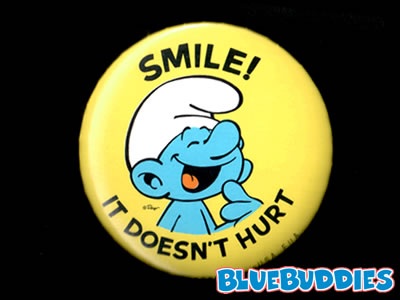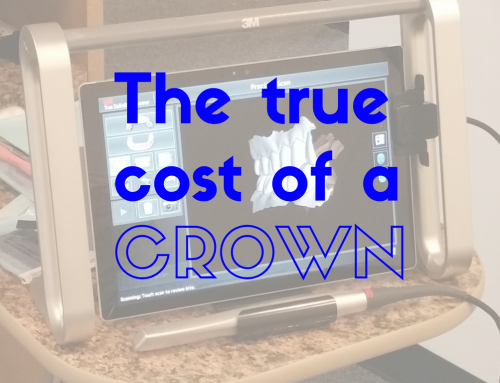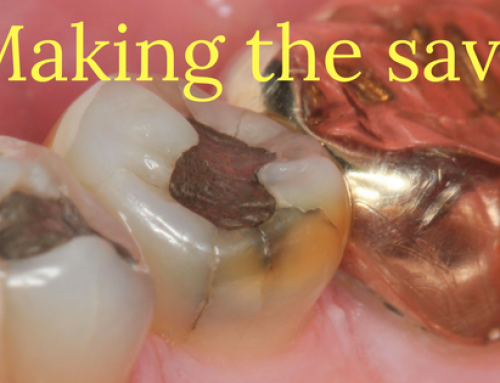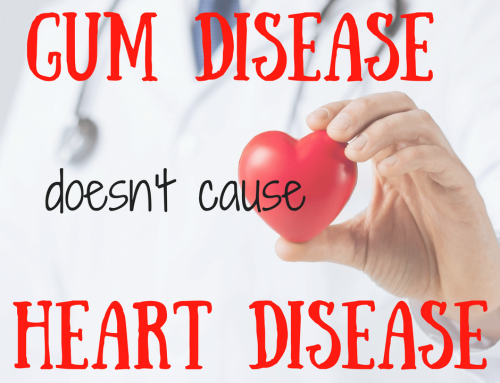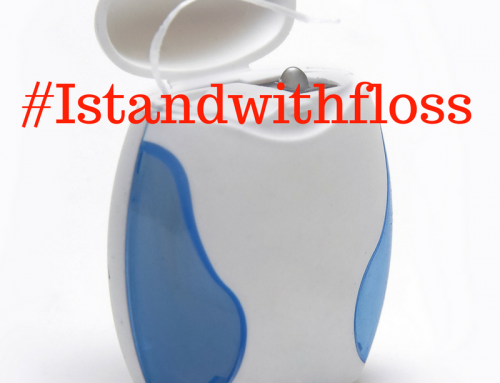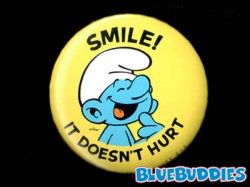
"Jokey smurf thought nothing of the filling that fell out last week. He wasn't as Jokey when his cheek swelled up."
“It didn’t hurt, Doc. So I didn’t come in…”
I hear this from patients. A lot!
Many dental problems actually don’t hurt. A couple examples:
- gum disease: Usually doesn’t hurt, even with advanced loss of bone around the tooth. Teeth can often become loose with little to no pain.
- early tooth decay: Painless. Tooth decay can often advance almost all the way to the nerve of the tooth with little or no pain
- broken teeth: a relatively common problem called “cracked tooth syndrome” actually hurts before the tooth breaks, but feels better once the tooth actually breaks!
In fact, by the time you have real pain with a tooth, it’s probably reached the point where the fix is more difficult and more expensive.
“O.K. Doc. I hear you. Tooth problems don’t always hurt. So, if it doesn’t hurt, how do I know I have a problem?”
That’s a good question. When a patient isn’t having any problems we would say that don’t have any symptoms. But they may have signs of trouble that they aren’t aware of.
Symptom: “a departure from normal function or feeling which is noticed by a patient, indicating the presence of disease or abnormality. A symptom is subjective, observed by the patient, and not measured.”
Sign: “A dental sign is an objective indication of some medical fact or characteristic that may be detected by a dentist during a dental examination…”
So, how does a patient know if there are any signs of problems? They need to go to the dentist. Regularly. Ideally they go to a dentist that they trust and that they’ve developed a relationship with over a period of time. A dentist uses symptoms (from the patient) as well as signs (collected by examination) to find problems. Ideally, problems are found when they’re very small and need minimal treatment. The best way to make sure problems are found early is by scheduling regular checkups with your dentist. Every six months is the minimum that I would recommend.
Some patients should be seen more often than every 6 months. Who are these patients?
- Patients who have “unstable” periodontal disease: If there’s advanced bone loss and we’re not sure that we’ve arrested the disease process we’ll want you to come in more often. Every three months is preferred.
- Patients with a high rate of decay: If you’ve had multiple cavities in the last year I’m going to want to check you pretty often. I’m also going to want to help monitor your diet (less pop, more xylitol gum) and probably will recommend fluoride varnish treatments every three months, or even more often.
- Patients on a lot of medications: multiple medications often means a dry mouth. Dry mouth is a huge risk for tooth decay.
- Patients with a history of head and neck radiation: radiation treatment for cancer can cause your salivary glands to produce much less saliva. This is a huge risk factor for tooth decay and these patients should be seen every 3 months or more often for preventive care.
“Aren’t you just trying to scare us into coming in more often?”
No. But if that’s what it takes, I’ll put on my Ghostface mask.
The bottom line is this…just because it doesn’t hurt doesn’t mean that everything is fine. You should be seeing your dentist at least every 6 months. Plus, you should make an appointment immediately if you have any of the following:
- a broken tooth: Whether it hurts or not, this needs to be seen and treated. A broken tooth that doesn’t hurt is a time bomb waiting to ruin your weekend, your vacation or a good night’s sleep. Broken teeth seem to know about Murphy’s Law and usually become a problem when your dentist isn’t in the office.
- a food catcher: Do you have a spot between your teeth where food always gets stuck? These “food traps” can and should be treated. This is a great place for a cavity to start.
- lost crown or filling: As much as you’d like to believe (and so would I) that all dental work lasts forever…it doesn’t. A crown or filling that comes out is a none-to-suble hint that there’s a problem. This needs to be seen!
- trauma: Did little Billy bump his tooth on the coffee table? Did Dad take a softball to the chin? Teeth that have been bumped can sometimes act up. Even if everything feels O.K., you should have your dentist take a look.
Make sure to let your dentist know if you do have symptoms. A patient’s description of the problem is the first step in determining a diagnosis. If your dentist isn’t listening to your concerns and symptoms, speak up or find another dentist!
Did find this post helpful? Annoying? I’d love to hear about it! You can share any Mead Family Dental post with a “Like” on Facebook, a “+1″ on Google+ or you can even “Tweet” it with Twitter! All you need to do is hover over the heart shaped button next to the title of the post. Or you can leave a comment by clicking on the balloon shaped icon next to the title.
If you’re looking for a dentist in Saginaw, we’re always happy to accept new patients! You can request an appointment online or call the office at (989) 799-9133. And, as always, you can email me at alan@meadfamilydental.com. I always answer my own emails!

